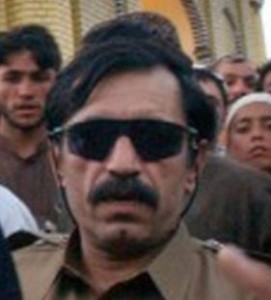US, UK Just Can’t Stop Hiding Prisoners in Afghanistan
It is a tradition that goes back to the very start of the Great War on Terror. Secret detention of prisoners has been both a central feature of the US approach to its response to terrorism and a rallying point for the creation of new enemies. In order to sustain this practice, the US has resorted to remarkable levels of dissembling and language engineering. Fresh controversy has arisen in Afghanistan centering around Afghanistan’s insistence (rooted in Afghan law), that all Afghan prisoners must be under Afghan control (note: the issue of some 49 or so foreign prisoners the US maintains at Parwan prison is completely separate).
The New York Times first broke the story on this latest controversy on Saturday:
A commission appointed by President Hamid Karzai to investigate detention facilities run by American and British forces in southern Afghanistan claimed Saturday to have uncovered secret prisons on two coalition bases, an allegation that could not be immediately confirmed but that was likely to further complicate relations between the Afghan government and its allies.
“We have conducted a thorough investigation and search of Kandahar Airfield and Camp Bastion and found several illegal and unlawful detention facilities run and operated by foreign military forces,” said Abdul Shakur Dadras, the panel’s chairman.
Additional stories on the issue now have come out from both the Washington Post and AP. The Post story describes the facilities that were found:
Abdul Shokur Dadras, a member of the commission, said two of the jails were overseen by British soldiers at Camp Bastion in Helmand province, while a third jail at that base was under American military control. At Kandahar Airfield, also in the southern part of the country, three more foreign-run prisons were discovered — one controlled by American soldiers, one by the British and one managed by a joint coalition force, Dadras said.
The US, as usual, was quick to declare innocence. From the Times story:
Lt. Col. J. Todd Breasseale, a spokesman for the Defense Department, wrote in an email, “Every facility that we use for detention is well known not only by the government of the Islamic Republic of Afghanistan, but also by the I.C.R.C.,” a reference to the International Committee of the Red Cross, a nonpartisan organization that provides humanitarian care for victims of conflict.
The International Security Assistance Force, or I.S.A.F., as the coalition is known, said in a statement on Saturday that it was “aware of their investigative team looking into the detention facilities in Kandahar and Helmand and we are cooperating fully with the investigation on this matter.”
Once again, it appears that a restriction that isn’t really a restriction could be the basis for this latest controversy. From the Times story:
He [Dadras] said his team reviewed the number of prisoners as well as the details of their detention. The issue at Camp Bastion has been aired before. The British military must abide by rules that prohibit the transfer of prisoners to facilities where torture is believed to occur. For now, that concern is unresolved, and the sites where these detainees are held by the British forces could be the locations Mr. Dadras is referring to.
In Kandahar, the details are less clear. American forces are allowed to detain combatants seized on the battlefield for up to 96 hours before turning them over to the Afghan government. It was unclear whether Mr. Dadras was referring to such detainees or whether his commission had uncovered evidence of prisons that were illegally holding Afghans.
As we will see in a bit, this restriction to holding Afghan prisoners for 96 hours applies to British forces as well. Except that as with virtually all “restrictions” on coalition forces in Afghanistan, this one doesn’t apply if they don’t want it to. From the AP story: Read more →

